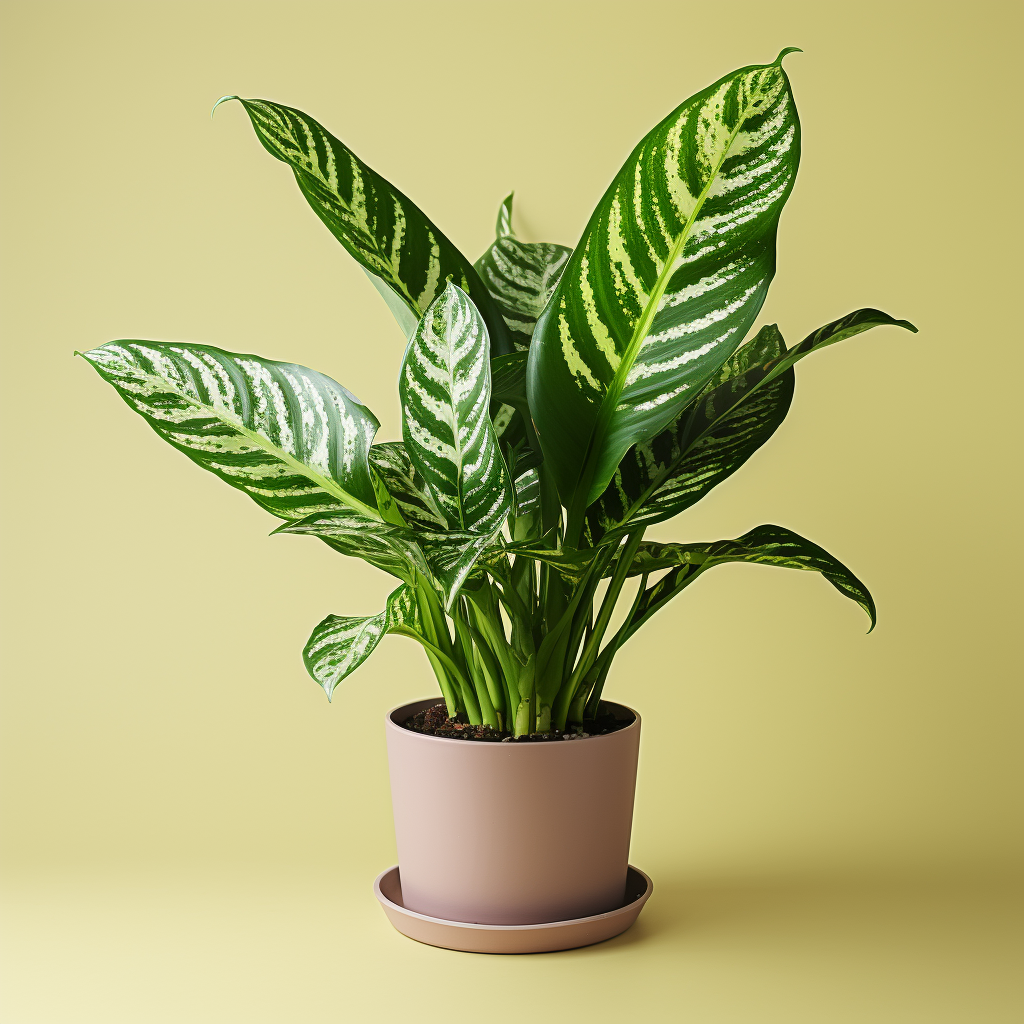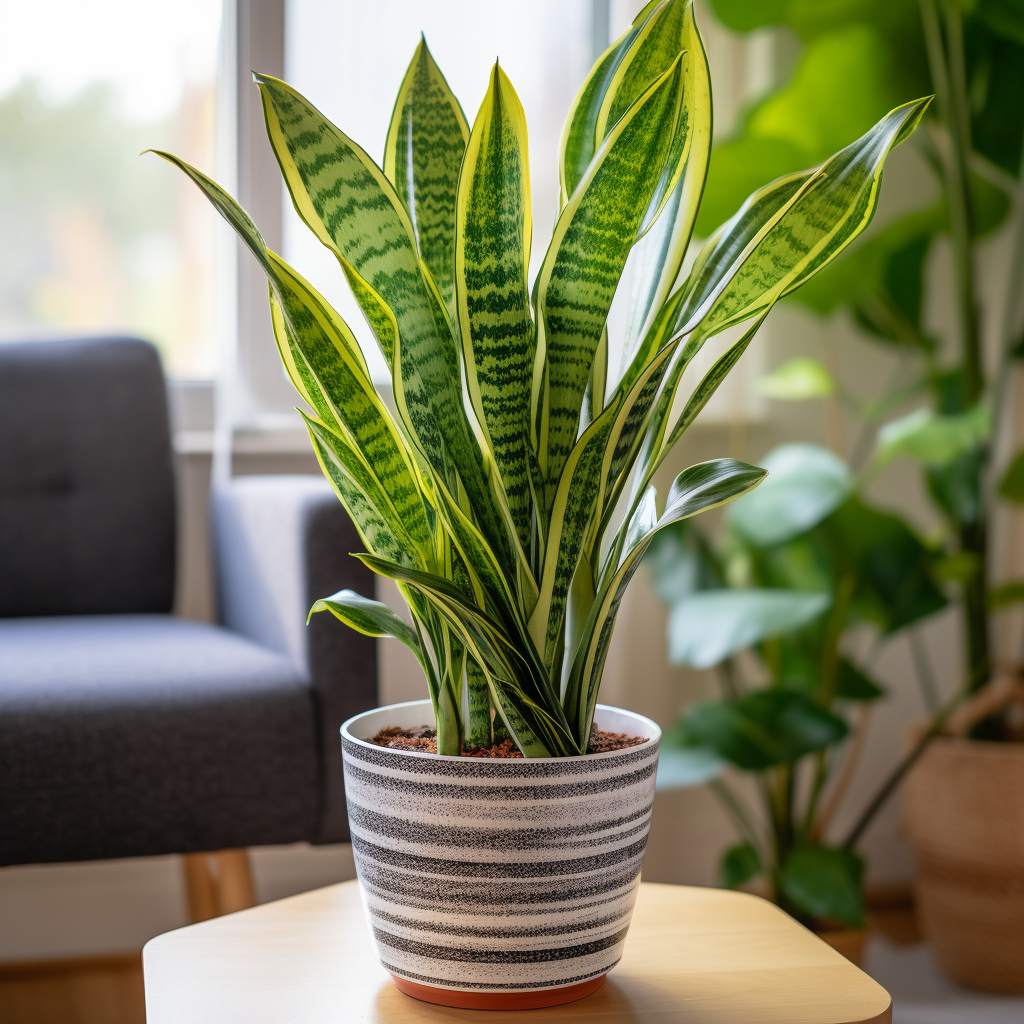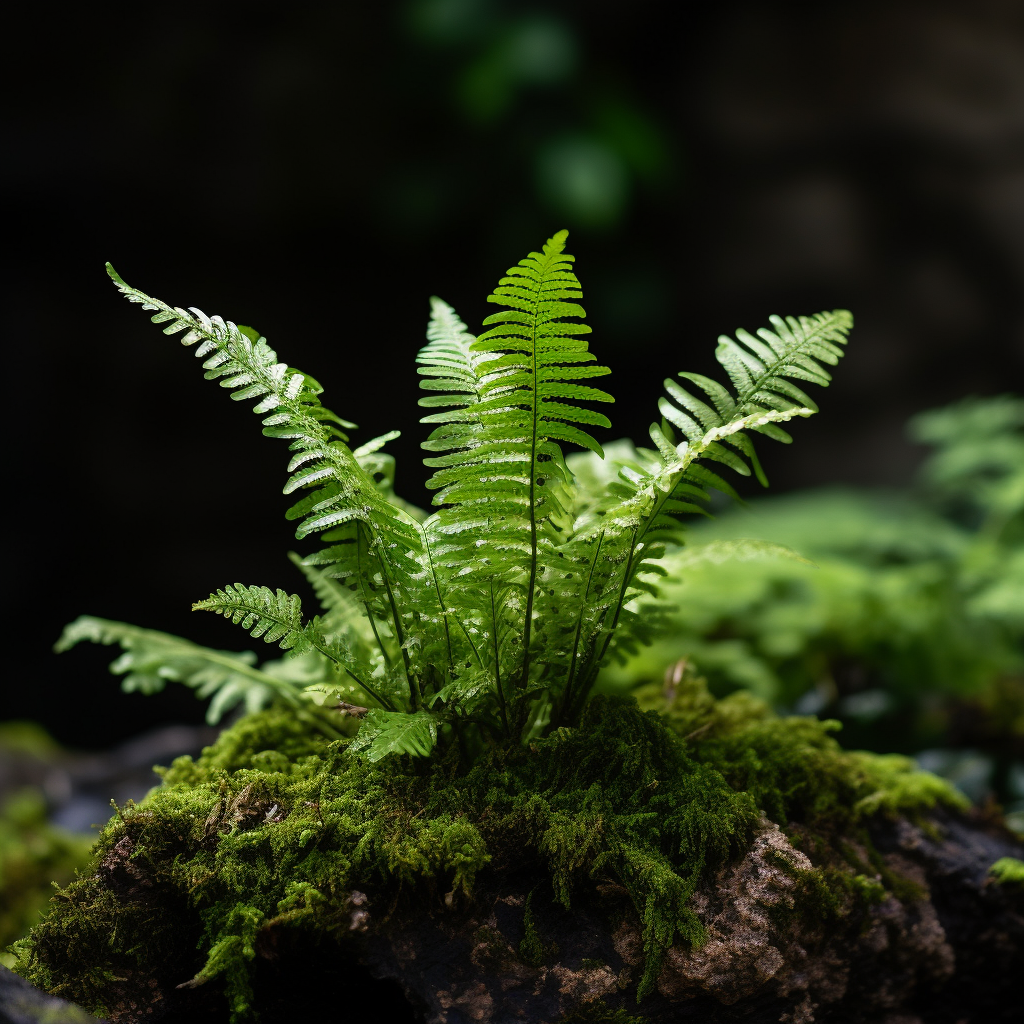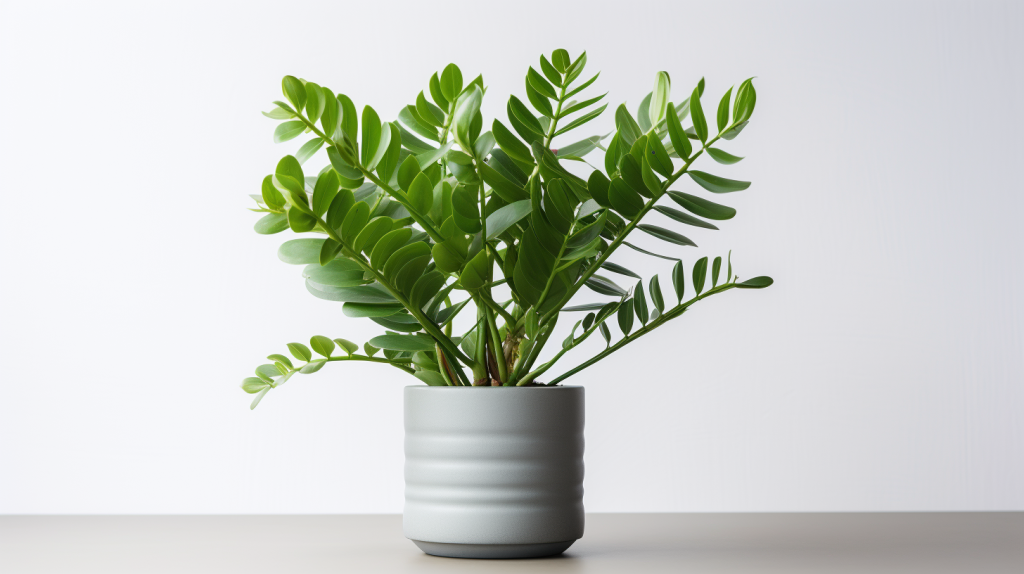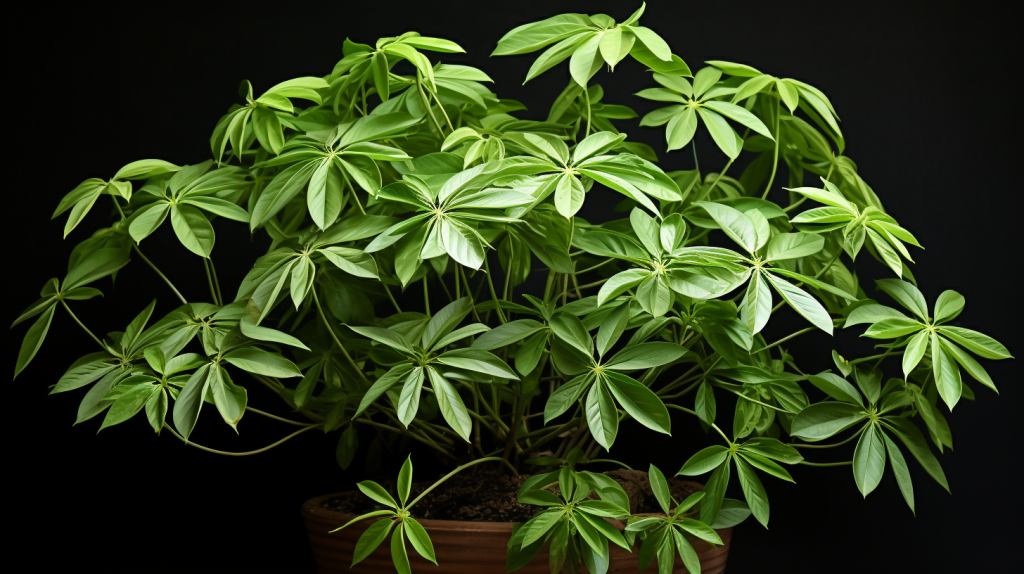The Dumb Cane, scientifically known as Dieffenbachia, is a tropical plant native to the Americas. It belongs to the Araceae family, known for their rich foliage and striking patterns. One of the standout characteristics of this plant is its lush, vibrant leaves that are a visual treat for plant enthusiasts.
How It Looks
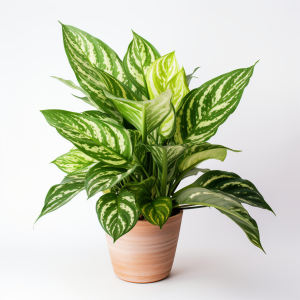
A mature Dieffenbachia typically grows between 3 to 6 feet in height, with leaves that can extend up to a foot long. The leaves are broad and oval-shaped, marked by patterns and variegation in shades of green and white or yellow. This lush greenery makes it an excellent choice as a houseplant, enhancing the aesthetic appeal of any indoor setting.
Flowering
The Dumb Cane is not particularly known for its flowers, but it can bloom under the right conditions. The flowers usually take the form of a greenish-white spathe and spadix, a typical feature of plants from the Araceae family. However, these are often hidden by the plant’s large, prominent leaves.
Is It Poisonous?
Yes, the Dieffenbachia is indeed poisonous. Its sap contains calcium oxalate crystals which can cause an intense burning sensation if ingested or if it comes into contact with the skin. It can also lead to temporary speechlessness, which is how the plant got its common name, ‘Dumb Cane’. Hence, it is advised to keep this plant out of the reach of children and pets.
Dieffenbachia Facts
| Fact | Description |
|---|---|
| Scientific Name | Dieffenbachia |
| Native Region | Americas |
| Family | Araceae |
| Height | 3 to 6 feet |
| Toxicity | Yes |
| Flower Color | Greenish-white |
| Lifespan | 3 to 5 years with proper care |
Types of Dieffenbachia
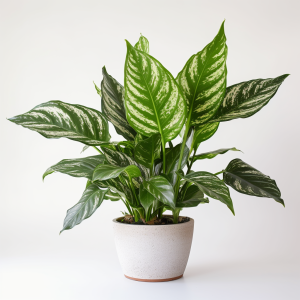
There are several types of Dieffenbachia, each with their unique leaf patterns. Some popular varieties include ‘Camille’ with its creamy yellow leaves bordered by dark green, ‘Tropic Snow’ noted for its large white and green leaves, and ‘Compacta’ which is a dwarf variant suitable for small spaces.
Dieffenbachia Care
| Care Aspect | Instructions |
|---|---|
| Light | Bright, indirect light |
| Water | Water thoroughly and allow the top inch of soil to dry out between waterings |
| Soil | Well-draining, fertile soil |
| Temperature | Prefers warm conditions between 60-75°F |
| Humidity | High humidity levels are beneficial |
| Fertilizer | Feed monthly during growing season with a balanced houseplant fertilizer |
Common Problems
Common problems that may arise while caring for a Dieffenbachia include leaf yellowing, drooping or wilting. These are often due to overwatering, under-watering, or exposure to cold temperatures. It’s also susceptible to pests like aphids, mealybugs, and spider mites.
Frequently Asked Questions
1. How often should I water my Dieffenbachia?
You should water your plant thoroughly and then allow the top inch of soil to dry out before watering again.
2. Is Dieffenbachia safe around pets?
No, the plant is toxic and can cause discomfort if ingested or touched, so it’s best to keep it out of the reach of pets.
3. What kind of light does a Dieffenbachia need?
Dieffenbachia prefers bright, indirect light. Too much direct sunlight can scorch the leaves.
4. Can I propagate my Dieffenbachia plant?
Yes, Dieffenbachia can be propagated by stem cuttings.
5. What should I do if my Dieffenbachia’s leaves are turning yellow?
Yellow leaves could indicate overwatering or under-watering. Check the plant’s watering schedule and adjust as needed.
Conclusion
Caring for a Dumb Cane Plant (Dieffenbachia) is an enjoyable task for houseplant enthusiasts. Its lush greenery can certainly enhance any interior decor, while its care routine is straightforward and manageable. With its array of patterns and sizes, there’s a Dieffenbachia variety to fit everyone’s aesthetic preference. However, always remember its toxic nature and keep it safely away from children and pets.

